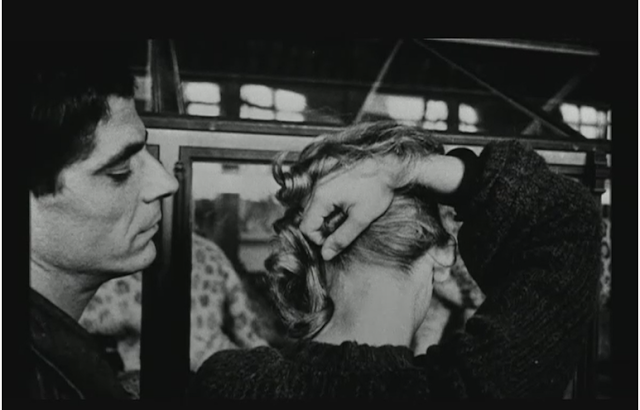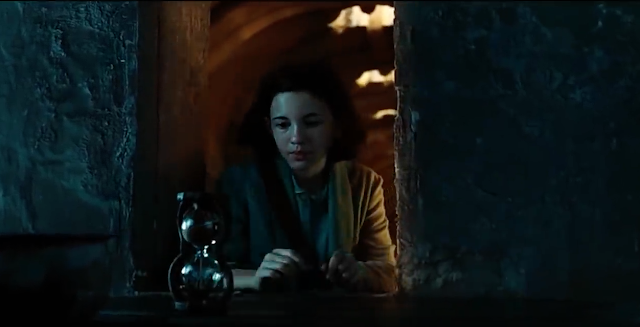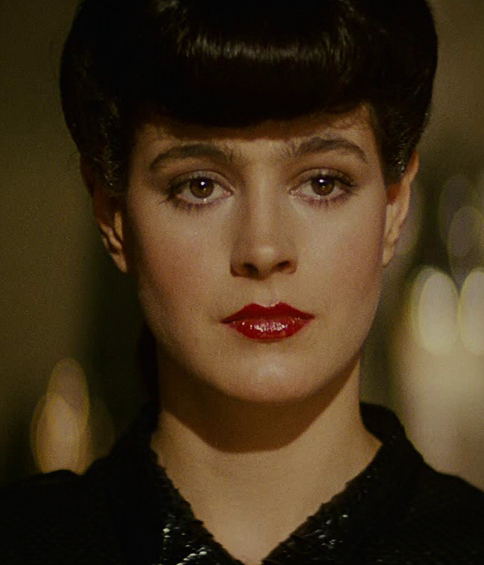La Jetée (1962)
Chris Marker's dystopian short film, told by narration and a photomontage of stills, focusses on a time traveller's ironic love affair.
When the time traveler takes his date to the museum we are given the chance to explore the effect of using stills. The shot where he looks at her neck is on screen for five seconds, allowing the audience to inspect the mise-en-scene. From his eyelids being partially closed we know that his gaze is fixed on the girl's neck, he is observing her as if she is in a glass box herself. To him she is an exhibit, as he realises, she is long dead in his time. We can also see that she is enjoying the date as she seems intrigued by the museum's exhibit, much like the time traveller is with her. By having the still last five seconds, Marker is allowing the audience to study this scene like a museum exhibit as well. making three parties study a different time: we are studying him, study her, study the exhibit. The technique used means that the film is entirely about the mise-en-scene and the positioning instead of movement. This means that each individual still has been chosen purposefully and forces the audience to explore the details Marker wants them to see.
When the time traveler takes his date to the museum we are given the chance to explore the effect of using stills. The shot where he looks at her neck is on screen for five seconds, allowing the audience to inspect the mise-en-scene. From his eyelids being partially closed we know that his gaze is fixed on the girl's neck, he is observing her as if she is in a glass box herself. To him she is an exhibit, as he realises, she is long dead in his time. We can also see that she is enjoying the date as she seems intrigued by the museum's exhibit, much like the time traveller is with her. By having the still last five seconds, Marker is allowing the audience to study this scene like a museum exhibit as well. making three parties study a different time: we are studying him, study her, study the exhibit. The technique used means that the film is entirely about the mise-en-scene and the positioning instead of movement. This means that each individual still has been chosen purposefully and forces the audience to explore the details Marker wants them to see.




Comments
Post a Comment